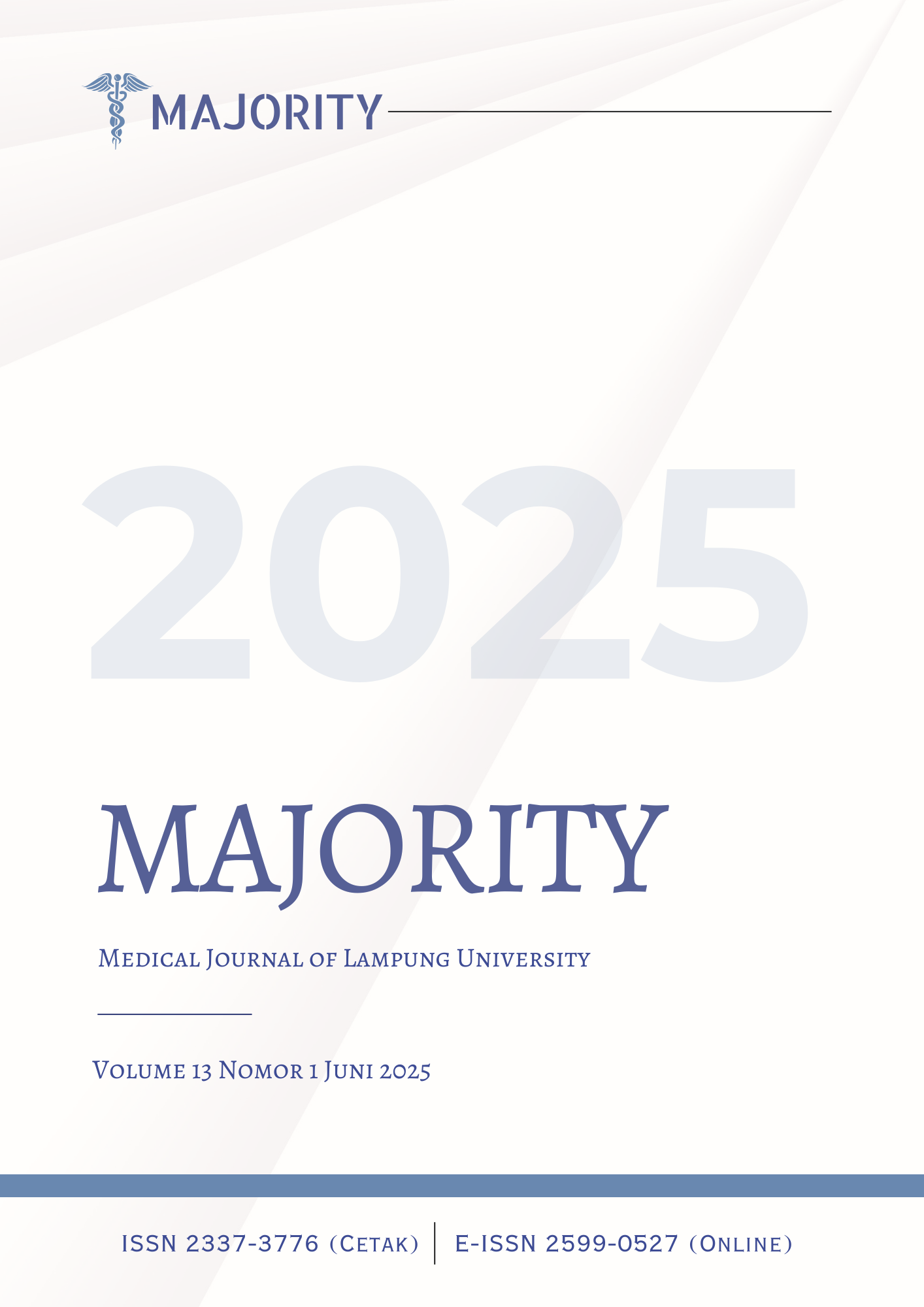Penurunan Nilai Kapasitas Vital Paksa (KVP) pada Spirometri Akibat Air Trapping yang Menyerupai Gambaran Kelainan Restriktif pada Penyakit Paru Obstruktif Kronik (PPOK)
Keywords:
air trapping, COPD, spirometry, pseudo-restrictionAbstract
Chronic Obstructive Pulmonary Disease (COPD) is a progressive lung disorder characterized by irreversible airflow obstruction. Diagnosis is established through spirometry with the criteria FEV₁/FVC < 0.70 post-bronchodilator administration. However, in some cases of severe COPD, a significant decrease in forced vital capacity (FVC) can be found due to the phenomenon of air trapping, which is the entrapment of air entering the lungs due to obstruction of the small airways. This causes an increase in residual volume (RV), total lung capacity (TLC), and a decrease in forced vital capacity (FVC), which can resemble a restrictive pattern or is known as pseudo-restriction. This case report describes a 55-year-old female patient with COPD who presented with progressive shortness of breath. The spirometry results showed an FEV₁/FVC ratio of 35.2%, FVC of 44.7% of the predicted value, and FEV₁ of 20.3% of the predicted value. The calculation shows an increase in air trapping value by 35%. Chest radiography shows bilateral hyperinflation and flattening of the diaphragm. The combination of clinical, radiological, and pulmonary function test results supports that the decrease in KVP value is not purely due to a restrictive disorder, but rather due to severe air trapping. A careful interpretation of spirometry is crucial to differentiate COPD from restrictive diseases and to prevent diagnostic and treatment errors.






